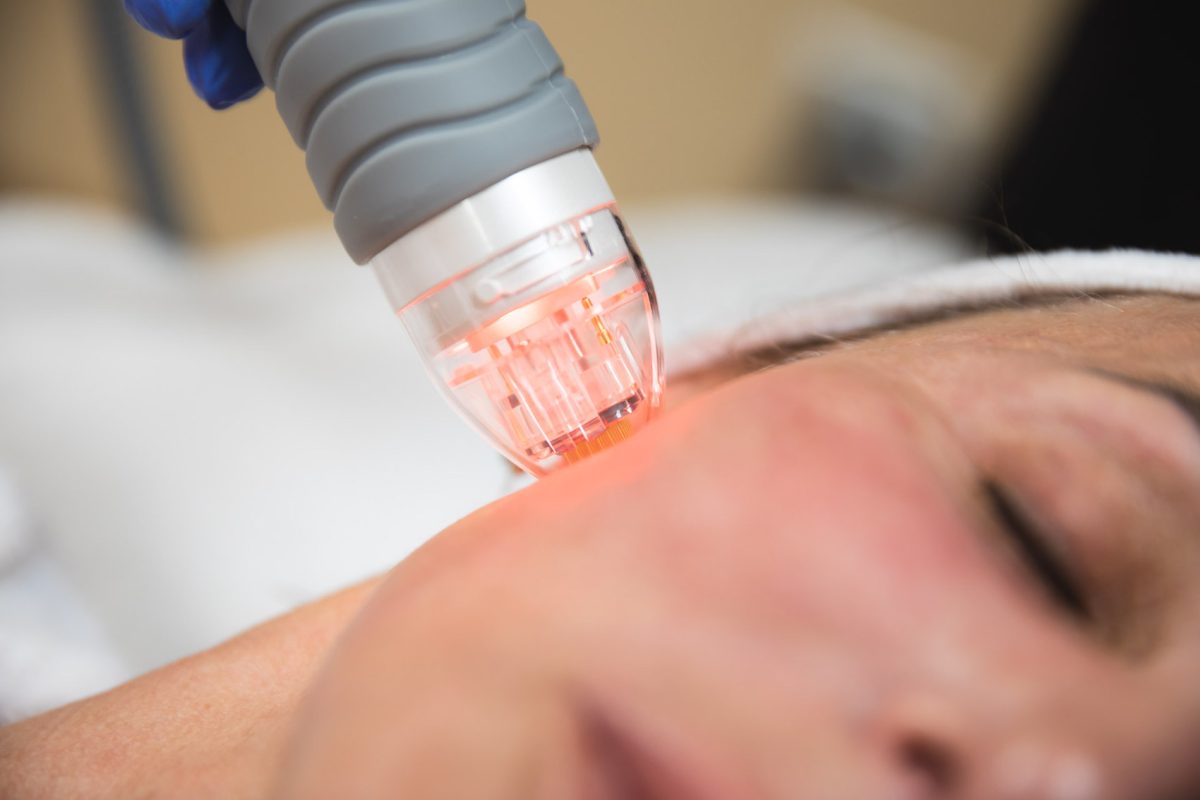Home » Acne News » Fractional RF Microneedling: a Dual Solution for Acne and Scarring
Fractional RF Microneedling: a Dual Solution for Acne and Scarring

For many people, the acne journey doesn’t end when breakouts stop. Scarring, oiliness, and relapses can linger, often for years.
But a newer treatment is gaining attention, both for reducing active acne and improving scars long-term.
It’s called fractional radiofrequency (RF) microneedling, and recent research suggests it could be one of the most effective and long-lasting options yet, with fewer side effects than traditional treatments.
What is fractional RF microneedling?
This treatment uses tiny, gold-plated needles to deliver controlled heat (radiofrequency energy) deep into the skin.
Think of it as a high-tech reboot for skin, designed to treat both breakouts and the marks they leave behind.
One of the most widely-used devices in the field is the Morpheus8, which can target different skin depths to stimulate collagen, reduce oil production, and remodel scarring, while keeping damage to the surface minimal.
What the research shows
A recent study looked at 356 patients with acne or acne scarring who were treated using one of three approaches: high-dose isotretinoin, ablative laser therapy, or fractional RF microneedling using the Morpheus8.
All participants followed similar skincare routines and were tracked over the course of three years, making this one of the longest follow-ups of its kind.
The results were significant. Those who received RF microneedling had the lowest relapse rate – just 24% – compared to 67% in the isotretinoin group and 75% in the laser group.
Patients treated with RF microneedling also reported the highest satisfaction levels and experienced minimal side effects, with no reports of burns or prolonged redness.
In addition to reducing relapses, the treatment also significantly improved early acne scars and conditions like acne and rosacea.
Its ability to target sebaceous glands also benefitted those with ongoing oiliness or sebaceous gland-related breakouts.
Can fractional RF microneedling treat old acne scars too?
Yes, and the treatment can be customised depending on the type of scarring it’s targeting:
- Boxcar scars generally improve with RF microneedling alone.
- Ice-pick scars respond best to a combination of RF microneedling and targeted techniques like TCA CROSS or punch excision.
- Rolling scars tend to respond well when subcision (a method to release scar tissue) is performed before RF treatment.
In a group of 49 patients with longstanding scarring, a tailored treatment combination including RF microneedling led to at least a 50% improvement in both the number and depth of scars, with no major complications reported.
Dermatologist perspective
Dr Lisa Byrom, dermatologist and acne expert, says the technology is showing strong results across multiple acne concerns.
“In a three-year follow-up study, RF microneedling showed the lowest relapse rates compared to isotretinoin and laser, while also reducing scar severity and improving skin texture,” she explains.
“It may offer an effective long-term strategy – both to maintain clear skin and to treat stubborn scarring, especially for patients who prefer to avoid systemic medications.”
Why it matters
Fractional RF microneedling is safe for all skin types, involves minimal downtime, and can be tailored to suit individual scarring patterns.
For people looking for a non-drug solution that supports both active acne and scarring – especially after other treatments haven’t worked – this option is becoming increasingly compelling.
While more research is always helpful, the growing evidence suggests RF microneedling could soon become a cornerstone of acne care, offering clearer skin and greater confidence long after breakouts have faded.
